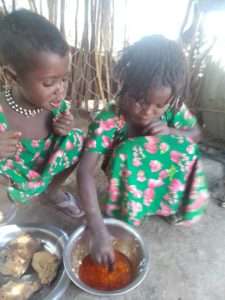There’s much that can be said about the intersection of poverty, gender and the Water, Sanitation and Hygiene (WASH) and nutrition outcomes of pastoralist women in Afar region, North Ethiopia. Here, women bear the burden of responsibility for nutrition and WASH provision but suffer disproportionately from the effects of poor WASH coverage. Lack of access to nearby reliable water sources means they spend large amounts of time fetching water and lack of adequate sanitation leaves them vulnerable to disease and physical insecurity when they are forced to defecate in the open. However, despite the implications on their health and wellbeing, it can be difficult for women’s voices to be heard when it comes to improving development outcomes for their communities.
One reason for this is the shockingly low literacy rates in the region, particularly for women and girls. Large numbers of women have had no exposure to even primary education and are functionally illiterate. Not only does this keep them out of government positions who would normally be consulted in implementing WASH projects, but it means that their intrinsic knowledge is often ignored and lost in conversations about community WASH. Even with standard participatory information gathering techniques such as focus group discussions, creating an environment where Afar women feel confident to speak up has been a struggle. In their conservative pastoralist communities, women are expected to be less forthwith with their opinions and will often remain silent in mixed groups.
Encouragingly, the use of photovoice in an ongoing action research project in the region has shown some promising developments in terms of amplifying women’s voices in such communities. Commissioned by GIZ Ethiopia and implemented by Fostvedt-Mills Consulting, the Nutrition-WaSH pathways project aims to investigate options for improving Nutrition and WaSH outcomes in pastoralist contexts.
The initial research was scheduled for March 2020, however the pandemic forced the project to pivot to a more “Covid-friendly” design. Bringing large numbers of people together for focus group discussions and participatory workshops was no longer feasible and researchers going into the communities were more restricted. To manage this challenge we turned to mobile technology solutions, ultimately landing on mWater for household survey collection and photovoice for qualitative data.
Our primary objective was to ensure the project remained participatory and centred the voices of women in the community, specifically mothers and female community leaders. PhotoVoice is an innovative qualitative data collection methodology that relies on photography done by community members to uncover their lived experiences and highlight what is significant to them. This methodology literally puts the task of data collection and narrative formation in the hands of the community members.
Photovoice can be perceived as simplistic but it’s about much more than simply providing cameras to participants. The benefits were evident from the beginning. During training sessions, female members of the data collection team were much more engaged and animated during the photovoice sessions than in previous training. Once in the field, female participants reported that this felt like the first time their voices were included in discussions and their view taken seriously. This came as somewhat of a surprise to our researchers who had conducted numerous prior FGDs with some of these women.
Although we are early in our analysis, we can already see the richness of the data. Discussion in post-photo selection interviews led the team to include a focus on the “cultural” aspects of nutrition and WASH. Participants photographed and explained what they considered important and “healthy”, and highlighted the positive aspects of their daily lives. They were keen to ensure that the pictures did not just represent suffering but also times of respite, relaxation and joy. With the camera in their hands, they were able to make these choices and represent their lives in a way that instilled pride and better reflected their reality.
From the onset, the use of images seemed to provide the women involved in the project with more confidence to tell their stories directly. A photo is tangible evidence that cannot be challenged as readily. It does not require formal education or book literacy. It speaks different languages and communicates across cultures. We are encouraged and inspired by the women that have shared their voices as part of this project and we continue to look to them to help shape the healthy future of their communities.
Below are some photos taken by the photovoice project participants with accompanying statements.

Photo credit: Odma – Afar region, Ethiopia | FMC Consulting AS

Photo credit: Ebrahim – Afar region, Ethiopia | FMC Consulting AS

Photo credit: Ebrahim – Afar region, Ethiopia; FMC Consulting AS

Photo credit: Ebrahim – Afar region, Ethiopia | FMC Consulting AS

Photo credit: Asiya – Afar region, Ethiopia | FMC Consulting AS

Photo credit: Fatuma – Afar region, Ethiopia | FMC Consulting AS

Photo credit: Asiya – Afar region, Ethiopia | FMC Consulting AS
This blog is the 1st in a 3-part series by Christine Fostvedt-Mills.
You can read the others here:
2nd blog Participatory action for nutrition & WASH with pastoralist women in Afar, Ethiopia
3rd blog Gender equality, nutrition & WaSH in pastoralist communities








